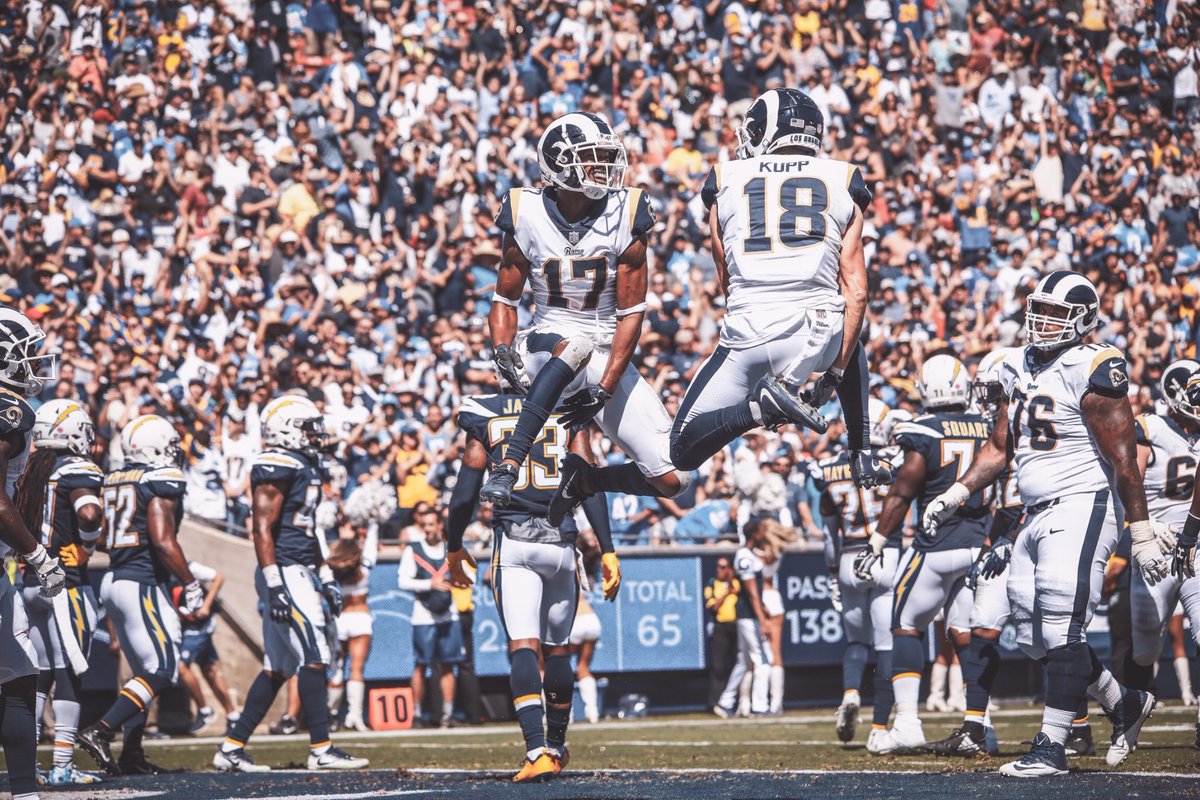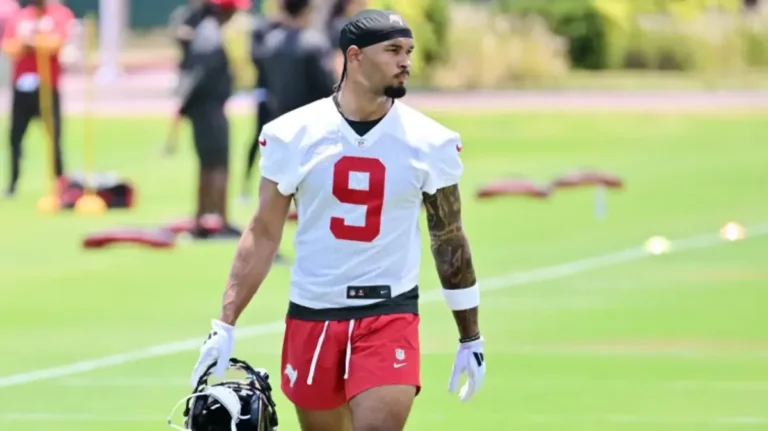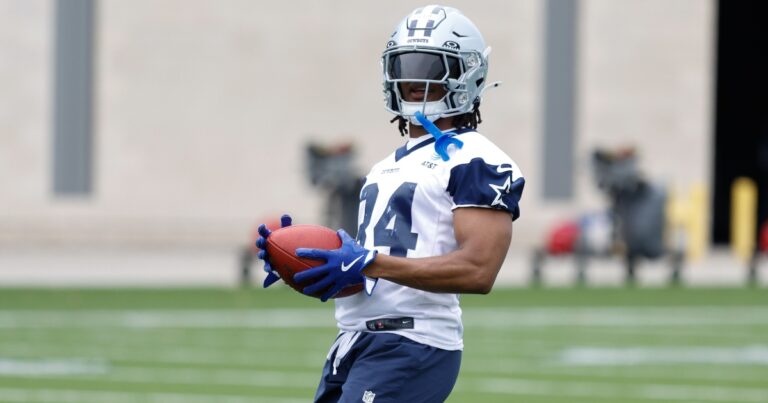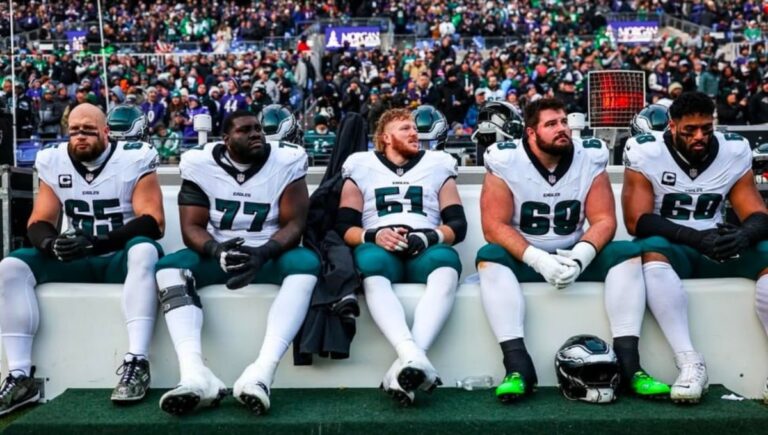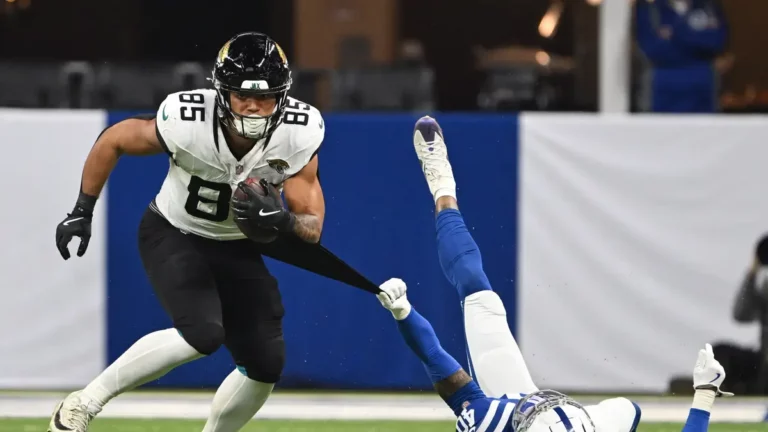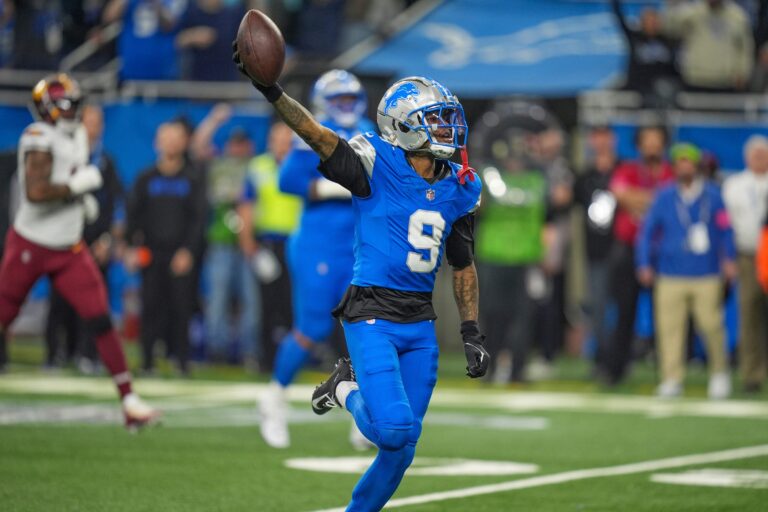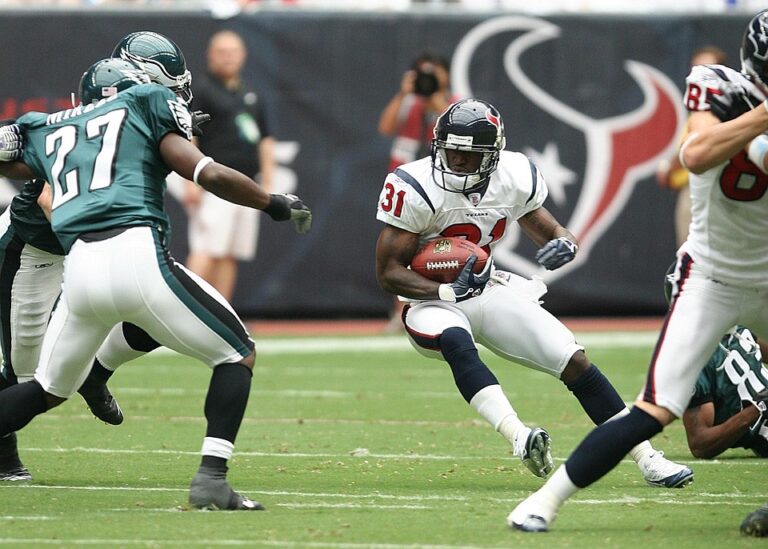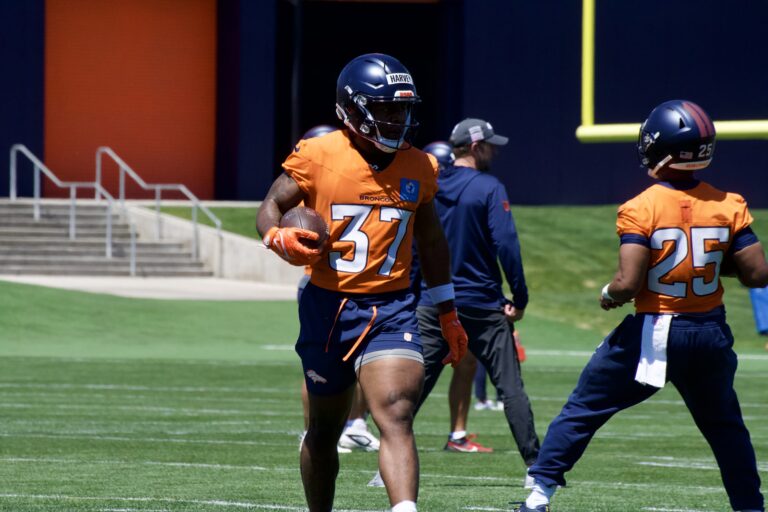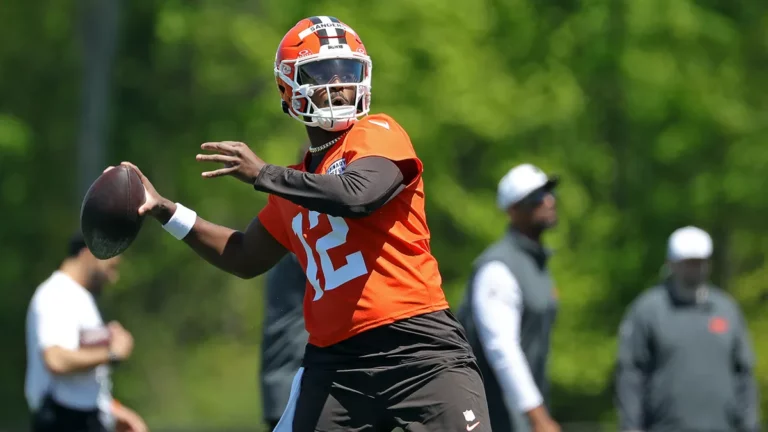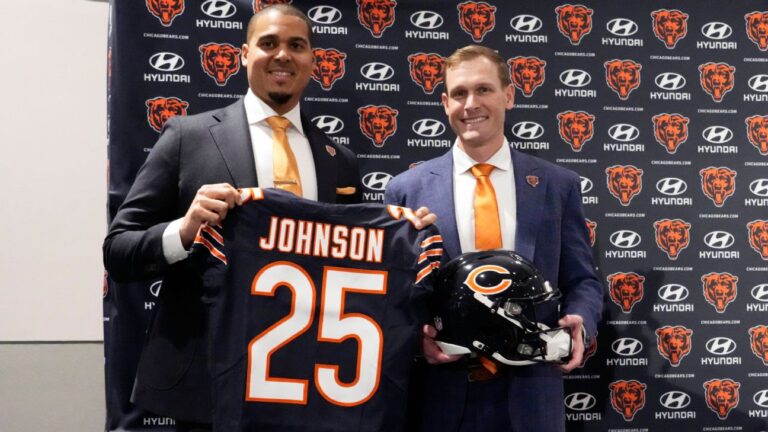One less than stellar season and the fantasy community seems to be jumping off the Los Angeles Rams offensive bandwagon. Is this a wise or hasty decision?
Indeed, 2019 wasn’t pretty. Jared Goff struggled mightily and failed to take a much desired step forward as a quarterback. Consequently, the offense scored more than 6 points fewer per contest (30.8 to 24.6), falling from the NFL’s second most potent offense to 10th.
Regardless, Sean McVay is still the head coach and primary play caller. Goff still sustained two receivers with over 1,100 yards, and this unit is due for major positive touchdown regression. As a whole, Goff threw for 4,638 yards but only 22 touchdowns, despite throwing for 60 touchdowns the previous two seasons combined.
Flash forward to 2020. The Rams added running back Cam Akers to fill the void left behind by Todd Gurley’s departure, as well as rookie WR Van Jefferson to add more youth to this talented core of wide receivers following Brandin Cooks‘ trade.
Reading between the lines, what do these additions mean for the Rams offensive scheme? What about star receivers Robert Woods and Cooper Kupp? How do these changes to the offense affect their fantasy values going forward?
Woods vs Kupp – Who is the WR1? The Answer Lies (Mostly) With Jared Goff… and Personnel
Last season was a tale of two offenses. For the first half of the season the Rams ran a pass heavy offense. The Rams lined up in 11 personnel (1 RB 1 TE) 80% of the time, according to Sharp Football Stats. Of those plays, the Rams passed 66% of the time. Kupp absolutely feasted those first eight weeks of the season. Through weeks one through eight, Kupp was the PPR WR2 and was on pace to be the fantasy MVP.
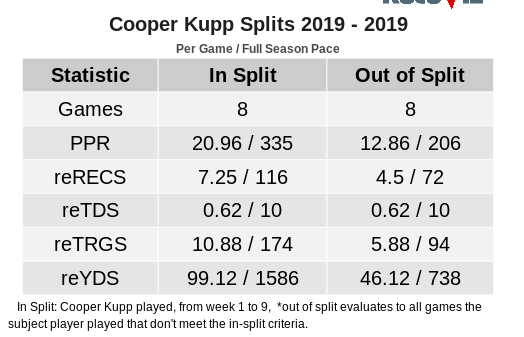
Kupp was on pace for 1,586 yards and 10 touchdowns, but what stands out the most was the fact that he was averaging nearly 11 targets per game. Michael Thomas, for example, would have finished with only 11 more targets than Kupp’s 2019 first half pace.
For further context, Kupp had 664 air yards and was commanding a whopping 28% target share and a 26% market share of the teams air yards. While the rest of the fantasy community was, rightfully, enamored with Michael Thomas’ historic season, Kupp was putting together a historic season of his own.

So what went wrong?
As Rotoviz’s game splits app shows, Kupp’s targets were nearly cut in half, and he was also on pace for less than half of the receiving yards from before the teams week nine bye week. Having gone all in on getting a top heavy roster, the Rams sold out their offensive line. As effective as Goff is throwing the ball, he is most effective when he has a clean pocket to work with and the Rams had the 31st ranked offensive line according to Pro Football Focus.
So McVay, being the offensive savant that he is, made a schematic tweak to the offense and switched to a more balanced approach by beautifully marrying the run and pass games together utilizing two tight end sets, aka “12 Personnel.’
An unfortunate byproduct of this schematic adjustment was that it forced Kupp off the field in favor of utilizing a field stretcher more. Starting from week 13 through week 17, Woods paced the Rams in snaps while Kupp’s percentage of snaps fell from consistently in the 90’s to 72%, 28%, 92%, 61%, and 61%.
For as good as Kupp was the first half of the season, Woods was arguably as bad. In the new 12 personnel (1 RB 2 TE) system, Woods found his mojo and was a league winner the back half of the year.
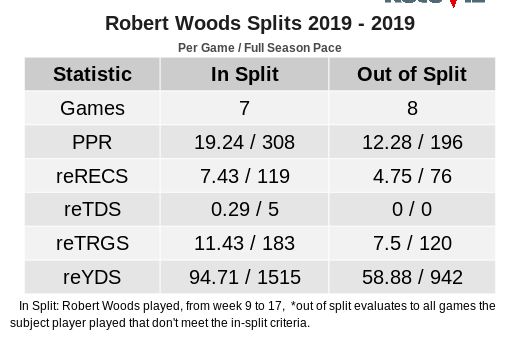
Woods became the de facto target hog the final half of the season for the Rams. He was on pace for only two less targets than Thomas, and was putting up nearly identical numbers to Kupp’s previous pace in the process.
In this new offensive system, the Rams offensive philosophy almost completely flip flopped. While in two tight end sets, the Rams ran the ball 66% of the time while passing 34% of the time. The Rams didn’t use two tight end sets excessively the last half of the year, just more strategically. In fact, they lined up in two tight end sets 30% of the time (up from 11% before the bye) and utilized three wide receiver sets only 67% of the time (down from 80%).
The second half the season Woods received a 32% market share of the teams air yards to go along with a 26% target share. From week 13 through week 17, while Kupp’s snap counts fell, Woods’ was on the field for 85%, 99%, 100%, 100%, and 95% of the teams snaps.

So, the question remains. Who is the Rams WR1 and why is the correct answer Robert Woods?
Simple. That answer lies with Goff. The shift to a greater onus on two tight end sets and the running game came as a result of Goff’s inept ability to handle pressure. Bringing in an extra tight end to block while simultaneously being a receiving threat is a valuable strategic tool in McVay’s utility belt. While it was just icing on the cake that Tyler Higbee took the opportunity and ran with it, the significance of the switch cannot be understated.
Having a tight end capable of taking the target share Higbee received and dominate doing so forced defenses to defend the Rams differently. Mainly Robert Woods.
With safeties having to focus more on Higbee and teams focusing on trying to contain Kupp after his blistering first half of the year, Woods finally got fed the ball. Goff finally had more time to survey the field and exploit Woods’ ridiculous ability to create separation (3.4 avg yards of separation).
Sharp Football Stats shows that, in two tight end sets, Goff was much more efficient and successful throwing the football. 52% of Goff’s pass plays were successful with two tight ends on the field, as opposed to a 47% success rate without.

Since the Rams failed to address their dismal offensive line problems this offseason, I fully expect the Rams to further utilize two tight end sets in 2020. With the talented Akers joining the explosive Darrell Henderson and the steady Malcolm Brown in the Rams backfield, the Rams should be able to lean more on their running game as well. This should help keep the pressure off of Goff and allow Woods to build upon his strong finish in 2019.
Beyond Goff’s deficiencies playing into Woods’ strengths, the other answer may be: Woods is a far superior WR at beating man coverage.
Kupp has long enjoyed the safe confines of the slot. Here, he often faces third corners and/or zone coverage, and he routinely shreds them.
Yet, when forced outside in two-WR sets, Kupp was more often tasked with tougher corners and more man. Look at his respective performance:
Over the course of #ReceptionPerception history (last 6 years) no WR has run against zone coverage at a higher rate than Cooper Kupp. Super unique role.
Never finished above the 12th percentile in success rate vs. man or press coverage at any point in his career. pic.twitter.com/AvrHsnPN7N
— Matt Harmon (@MattHarmon_BYB) May 11, 2020
Given the respective ADPs of Kupp (3.06) and Woods (5.02), the value clearly rests with Woods… the better player, in a better 2020 role, at a better price.
Factoring in the apparent shift in the Rams offensive philosophy, I also think Woods is the clear cut, straight up WR1 here in 2020, regardless of cost. Betting on a Rams rebound is easy at their reduced price tgs, and Woods offers the highest ceiling, best floor, and arguably best price of the WRs corps.
